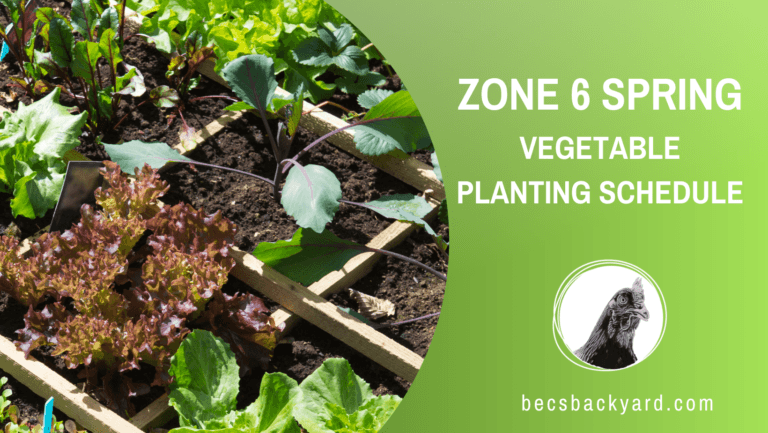How Often Do You Water Strawberries: A Guide to Proper Strawberry Watering Techniques

Strawberry plants are a popular fruit-bearing plant that can be grown in both gardens and pots. Strawberries are known for their sweet, juicy berries that are perfect for eating fresh, making jams and jellies, and baking. To ensure that your strawberry plants produce the best fruit possible, it’s important to understand their growth habits and water needs. The question is “How Often Do You Water Strawberries?”

How Often Do You Water Strawberries
How Often Do You Water Strawberries? Water is essential for the growth and health of strawberry plants. However, overwatering can lead to root rot, while underwatering can cause dehydration and stunted growth. Therefore, it is crucial to water strawberries correctly and at the right frequency.
The amount of water required by strawberries depends on several factors, such as the type of soil, climate, and stage of growth. As a general rule of thumb, strawberries need about 1 to 1.5 inches of water per week. However, sandy soils may require more frequent watering, while heavy soils may need less.
One way to determine if your strawberries need watering is to use a moisture meter. Insert the meter into the soil near the base of the plant and read the moisture level. If the reading is below 30%, it’s time to water.
To avoid overwatering, only water strawberries when the top inch of soil is dry to the touch. Also, water in the morning or evening to prevent evaporation and sunburn.
If you’re growing strawberries in pots, make sure the container has drainage holes to prevent waterlogging. Water the plants until the excess water drains out of the bottom of the pot.
In summary, watering strawberries requires a balance between hydration and overwatering. By following the guidelines above, you can ensure that your strawberries receive the right amount of water at the right frequency.
Ideal Watering Techniques
Watering strawberries is crucial to their growth and productivity. However, improper watering can lead to over or under-watering, which can harm the plants. Here are some ideal watering techniques to ensure your strawberries thrive.
Drip Irrigation
Drip irrigation is a highly efficient watering method that delivers water directly to the plants’ roots. This system is ideal for strawberries as it helps to minimize water waste and reduces the risk of fungal diseases. Drip irrigation systems can be set up on a timer, which ensures that your plants receive the right amount of water at the right time.
Sprinklers
Sprinklers are a popular watering method for strawberries. However, overhead sprinklers can lead to water waste and increase the risk of fungal diseases. To avoid this, use low-pressure sprinklers that deliver water directly to the plants’ base. This method ensures that the plants receive the right amount of water without wasting any.
Watering Frequency
Strawberry plants require about 1-2 inches of water per week, depending on the climate and soil conditions. It’s best to water them deeply and slowly, so the moisture reaches the plant’s roots, where it’s needed the most. During hot or dry weather, it may be necessary to water your strawberry plants every two to three days.
Watering Time
Water your strawberries early in the morning to avoid evaporation and fungal diseases. Late afternoon or evening watering can lead to waterlogging, which can harm the plants.
HOT TIP!!
Using mulch around the the base of the strawberry plant has a few great benefits.
- Reduction of Water Evaporation: The mulch will help reduce evaporation of water in the soil, allowing the plant to access water to aid with growing and maturing the fruit
- Keeping Fruit Clean : The mulch keeps the fruit off the soil keeping it clean
- Deters Soil Pests : Having mulch puts a barrier in place for soil dwelling pests so they can’t access the fruit as easily

Natures Premier Chopped Straw

Chopped wheat straw can be an effective and convenient mulch option for strawberry plants. Its benefits, such as weed suppression, moisture retention, and soil improvement, make it a valuable addition to your strawberry garden. Proper application and maintenance will help you achieve successful results with chopped wheat straw mulch.
Find on AmazonImpact of Climate and Weather
When it comes to watering strawberries, climate and weather play a crucial role. The amount and frequency of watering required for strawberries depend on several factors like rainfall, weather conditions, drought, sunlight, and sun exposure.
Rainfall is a significant factor in determining the watering needs of strawberries. If your area receives consistent rainfall, it may not be necessary to water your strawberries regularly. However, in drier climates, you may need to water them regularly to prevent dehydration.
Weather conditions also affect the watering requirements of strawberries. Hot and dry weather conditions increase the water needs of the plants, while cooler and wet weather conditions reduce their water needs. Checking weather reports can help you determine the best time to water your strawberries.
Drought conditions can have a severe impact on strawberry plants, leading to stunted growth and reduced yield. In such cases, it is essential to provide adequate water to the plants regularly.
Sunlight and sun exposure also play a role in determining the watering needs of strawberries. Plants in direct sunlight require more water than those in shaded areas.
In summary, climate and weather conditions have a significant impact on the watering needs of strawberries. Checking weather reports, monitoring rainfall, and providing adequate water during drought conditions can ensure healthy and productive plants.
Soil Considerations for Watering
When it comes to watering strawberries, the type of soil they are planted in plays a significant role in determining how often they need to be watered. Different soil types have different water retention capacities, and this affects how quickly the soil dries out and how much water the plants need.
Sandy soils tend to drain water quickly, which means they dry out faster than clay-based soils. In contrast, clay soils have a higher water retention capacity, which means they hold onto water for longer periods. As a result, sandy soils require more frequent watering, while clay-based soils require less frequent watering.
Regardless of soil type, it’s essential to ensure that the soil is well-drained. Poorly drained soil can lead to waterlogging, which can damage the roots of the strawberry plants and cause them to rot. To check if the soil is well-drained, dig a hole and fill it with water. If the water drains away within an hour or two, the soil is well-drained. If the water takes longer to drain away, the soil may be poorly drained and may require additional drainage measures.
It’s also important to note that the moisture content of the soil can vary depending on the time of year. During the summer months, when temperatures are high, the soil may dry out faster, and the plants may require more frequent watering. In contrast, during the winter months, when temperatures are lower, the soil may retain moisture for longer periods, and the plants may require less frequent watering.
In summary, when watering strawberries, it’s crucial to consider the type of soil they are planted in, the drainage of the soil, and the moisture content of the soil. By keeping these factors in mind, you can ensure that your strawberry plants receive the right amount of water to thrive.
Gardening Practices Affecting Watering
When it comes to watering strawberries, the amount and frequency of watering depend on various factors, including gardening practices. Here are some gardening practices that can affect watering:
Garden vs. Pot
If you’re growing strawberries in a garden, you need to water them less frequently than if you’re growing them in a pot. This is because garden soil retains moisture better than potting soil. In a garden, you can water your strawberries once or twice a week, depending on the weather and soil moisture. In contrast, potted strawberries require more frequent watering, usually every two to three days, especially during hot and dry weather.
Mulching
Mulching can help reduce water loss from the soil and keep the soil moist. Organic matter such as straw, leaves, or grass clippings can be used as mulch for strawberries. Mulching can also help regulate soil temperature, suppress weeds, and improve soil structure. It’s recommended to mulch strawberries with a layer of 2-3 inches thick.
Fertilizer
Fertilizer can affect the water needs of strawberries. Over-fertilizing can lead to excessive vegetative growth, which can increase water demand. On the other hand, under-fertilizing can result in stunted growth and reduced fruit production. It’s best to fertilize strawberries according to soil test results and recommendations.
Compost
Adding compost to the soil can improve soil structure and water-holding capacity. Compost can also provide nutrients to the plants and enhance soil fertility. It’s recommended to add compost to the soil before planting strawberries, and then apply a thin layer of compost around the plants every spring.
In summary, gardening practices such as mulching, fertilizing, and adding organic matter can affect the water needs of strawberries. Understanding these practices can help you water your strawberries more efficiently and effectively.
Recognizing Overwatering and Underwatering
Proper watering is critical for the growth and fruit production of strawberry plants. Overwatering and underwatering can both cause significant damage to the plants. In this section, we will discuss how to recognize the signs of overwatering and underwatering.
Signs of Overwatering
Overwatering is a common mistake that many gardeners make. It can cause root rot and other problems that can harm your strawberry plants. Here are some signs that your plants may be overwatered:
- Wilting leaves that are still green
- Yellowing leaves with brown spots
- Stunted growth
- Root rot
If you notice any of these symptoms, it’s important to reduce the amount of water you’re giving your plants. Make sure the soil is well-draining and not waterlogged.
Signs of Underwatering
Underwatering is another common mistake that can harm your strawberry plants. If your plants are not getting enough water, they may show the following signs:
- Wilting leaves that are dry and brittle
- Yellowing leaves that are crispy
- Slow growth
- Dryness in the soil
If you notice any of these symptoms, it’s important to increase the amount of water you’re giving your plants. Make sure the soil is moist but not waterlogged.
Finding the Right Balance
Finding the right balance between overwatering and underwatering can be tricky. The best way to ensure your plants are getting the right amount of water is to check the soil regularly. Stick your finger into the soil up to the second knuckle. If the soil feels dry at that depth, it’s time to water your plants. If it feels moist, wait a day or two before checking again.
In conclusion, it’s important to pay close attention to your strawberry plants and their watering needs. Overwatering and underwatering can both cause significant damage. By recognizing the signs of these issues, you can take steps to correct them and ensure your plants thrive.
Watering and Strawberry Growth
Watering is one of the most critical factors in the growth and development of strawberry plants. Proper watering is essential for optimal growth, fruiting, and yield. However, watering strawberry plants can be a bit tricky, and there are several factors to consider to achieve the right balance.
Strawberry plants require a consistent watering schedule to succeed. Erratic watering can lead to poor fruiting, reduced yield, and even plant death. During the growing and fruiting season, strawberry plants need approximately one to two inches of water every seven days. However, this can vary depending on the variety of strawberry and the location of your garden.
It is crucial to find the right balance when watering strawberry plants. Overwatering can lead to root rot, and underwatering can cause the fruit to become small and dry. Therefore, it is essential to monitor the soil moisture level regularly.
The best time of day to water strawberries is early in the morning or late in the evening. Watering during the day can cause the water to evaporate quickly, which can lead to water stress. Additionally, watering during the day can cause guttation, which is the release of water droplets from the leaves. Guttation can lead to fungal growth and disease.
In conclusion, watering is a crucial factor in the growth and development of strawberry plants. It is essential to find the right balance and schedule to ensure a plentiful harvest. By following the guidelines above, you can ensure that your strawberry plants are healthy and productive.
Understanding Disease Risks with Watering
When it comes to watering your strawberry plants, it is important to understand the risks of disease that can arise from improper watering practices. Overwatering can lead to fungal diseases, such as root rot and crown rot, while underwatering can cause the plants to become stressed and more susceptible to fungal infections.
Fungal diseases thrive in moist environments, so it is important to avoid overwatering your strawberry plants. Instead, aim to water them deeply and infrequently, allowing the soil to dry out slightly between waterings. This will help prevent the growth of fungi in the soil.
In addition to avoiding overwatering, it is important to ensure that your strawberry plants are well-drained. Poor drainage can lead to standing water, which can create the perfect environment for fungal growth. If your soil is heavy or poorly drained, consider amending it with organic matter to improve drainage.
Finally, it is important to be mindful of the time of day that you water your strawberry plants. Watering in the morning allows the plants to dry out during the day, reducing the risk of fungal infections. Watering in the evening or at night can leave the plants wet for an extended period of time, increasing the risk of disease.
By understanding the risks of disease associated with improper watering practices and taking steps to prevent them, you can help ensure that your strawberry plants remain healthy and productive throughout the growing season.
Watering Potted Strawberries
If you’re growing strawberries in a pot, it’s important to water them frequently to keep the soil moist. Here are some tips to ensure your potted strawberries stay hydrated:
- Water strawberry plants 3-5 times per day, especially whenever the soil dries out. Keep the container moist at all times.
- In the heat of the summer, water your strawberry plants several times a day. Keep the soil moist, never dry.
- Make sure the container will drain adequately to prevent sogginess.
- Use a watering can or a hose with a gentle spray to avoid damaging the plants or the soil.
- Avoid getting water on the leaves of the plant as this can encourage disease.
It’s important to note that overwatering can be just as harmful as underwatering. Be sure to check the soil regularly to ensure it’s not too wet or too dry.
In summary, potted strawberries need frequent watering to keep the soil moist, especially during the summer months. Be sure to use a gentle spray to avoid damaging the plants or soil, and avoid getting water on the leaves of the plant.
Strawberry Plants | Fragaria ananassa
Botanical Information: Scientific Name: Fragaria ananassa | Common Name: Strawberry Plant
General Description: The strawberry plant is a small, herbaceous perennial plant that belongs to the Rosaceae family. It is cultivated for its sweet, red, juicy berries that are enjoyed worldwide in various culinary applications. Strawberry plants are known for their low-growing habit and the distinctively heart-shaped leaves that make them easily recognizable.

Leaves: The leaves of a strawberry plant are compound and composed of three leaflets arranged in an alternate pattern along the stem. Each leaflet is serrated along the edges, giving the leaves a slightly jagged appearance. The color of the leaves can vary depending on factors like age and environmental conditions, but they usually range from medium green to darker shades.
Stems and Runners: Strawberry plants have multiple stems that emerge from a central crown located at the base of the plant. These stems can grow up to a foot in height and are covered in fine, short hairs. One of the distinctive features of strawberry plants is their runners, also known as stolons. Runners are thin, elongated stems that grow horizontally along the ground. They have nodes that produce new plantlets when they come in contact with soil, allowing the plant to reproduce vegetatively.
Flowers: Strawberry plants produce small, white to pale pink flowers that are typically five-petaled. These flowers emerge on short stalks from the axils of the leaves. The blossoms are both functional and ornamental, attracting pollinators such as bees with their delicate fragrance and nectar. Once pollinated, the flowers give way to the development of the familiar strawberry fruit.
Fruit: The strawberry fruit is actually a swollen receptacle (the base of the flower) that holds numerous tiny achenes (small seed-like structures). The exterior of the fruit is covered in small, shallow pits called “achenes,” each containing a seed. The ripe strawberry is known for its vibrant red color, though there are also cultivars with pink, white, or even yellow fruits. The fruit is typically juicy and sweet, with a unique combination of flavors that can range from tangy to sugary.
Root System: The root system of a strawberry plant is relatively shallow and fibrous. The majority of the roots are found within the top few inches of soil, extending outwards from the base of the plant. This shallow root system allows the plant to efficiently access nutrients, water, and oxygen from the soil surface. This also means that they need to watered more often because the plant does not have the root system that can access deeper water reserves.
Cultivation: Strawberry plants thrive in well-draining, loamy soil with a slightly acidic to neutral pH. They prefer full sun but can tolerate some shade. Strawberries are often grown in rows or mounded beds, and spacing between plants allows for proper air circulation and helps prevent disease. Proper care includes regular watering, mulching to retain moisture and suppress weeds, and occasional fertilization. Depending on the variety, strawberries can be harvested from spring through early summer.
Cultural Significance: Strawberries have a rich cultural significance and are often associated with feelings of sweetness, indulgence, and summer delight. They are used in a wide range of culinary applications, from fresh consumption to jams, jellies, pies, and desserts. Strawberry festivals and picking activities are common in many regions, where people gather to enjoy the experience of picking their own ripe strawberries directly from the plant.
Frequently Asked Questions
What is the best soil for growing strawberries?
Strawberries thrive in well-draining soil that is rich in organic matter. A soil pH between 5.5 and 6.5 is ideal for strawberries. Sandy loam and loamy soils are the best for growing strawberries.
How much water does a strawberry plant need per week?
Strawberry plants require about 1-2 inches of water per week, depending on the climate and soil conditions. During hot or dry weather, it may be necessary to water your strawberry plants every two to three days.
Do strawberries need a lot of sunlight?
Yes, strawberries require at least 6-8 hours of full sun daily, and they grow even better with prolonged exposure of up to 10 hours to fruit well into plum, tasty berries.
Can you overwater strawberries?
Yes, overwatering can cause root rot and other problems. It’s important to water strawberries deeply and slowly, so the moisture reaches the plant’s roots, where it’s needed the most. Avoid watering the foliage, as this can lead to fungal diseases.
When should you stop watering strawberries?
Stop watering strawberries about two weeks before the end of the fruiting season. This will allow the plants to start hardening off for the winter.
How often should you water strawberries in raised beds?
In raised beds, it’s important to water strawberries deeply and slowly, so the moisture reaches the plant’s roots, where it’s needed the most. During hot or dry weather, it may be necessary to water your strawberry plants every two to three days.
Conclusion
Watering your strawberry plants correctly is crucial for their growth and overall health. While it’s important to keep the soil consistently moist, it’s equally important not to overwater them. By following the tips outlined in this post and paying attention to your plants’ specific needs, you can ensure that your strawberries thrive and produce an abundant harvest. So, remember to water your strawberries regularly, but don’t forget to give them some breathing room too!






